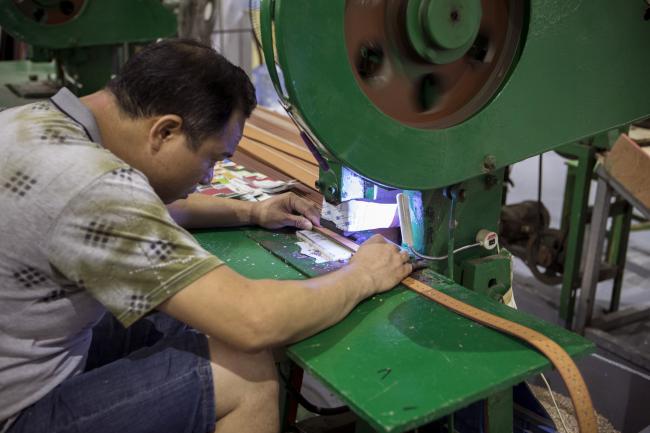(Bloomberg) -- China lowered its goal for economic growth and announced a major tax cut, as policymakers seek to pull off a gradual deceleration while grappling with a debt legacy and the trade standoff with the U.S.
The gross domestic product growth target released Tuesday morning in Premier Li Keqiang’s annual work report to the National People’s Congress was set at a range of 6 to 6.5 percent for 2019. The shift to a band from the previous practice of using a point figure gives policy makers room for maneuver and compares with last year’s “about” 6.5 percent goal.
The lower bound of the GDP target would be the slowest pace of economic growth in almost three decades, a consequence of China’s long deceleration as policy makers prioritize reining in debt risks, fixing up the environment and alleviating poverty. Economists surveyed by Bloomberg see output growth slowing to 6.2 percent this year from 6.6 percent in 2018, before easing further in 2020 and 2021.
The report pledged to keep China’s leverage ratio “basically stable” in 2019. Policy makers are trying to rekindle lending to the private sector while avoiding an accelerated run up in debt, with the total debt pile now approaching 300 percent of GDP.
A cut of 3 percentage points to the top bracket of value added tax was announced in a move aimed at benefiting the manufacturing sector. That plan was reported by Bloomberg News on Monday. A 3 percentage-point cut to VAT could deliver a boost worth up to 600 billion yuan ($90 billion) or 0.6 percent of GDP, according to estimates by Morgan Stanley (NYSE:MS).
The target budget deficit for 2019 was set at 2.8 percent of GDP, versus last year’s goal of 2.6 percent. The more modest growth target paired with further targeted stimulus measures typifies the government’s attempt to steady the economy after a bruising 2018 and marks a shift from last year’s edition, when the emphasis was on reining in financial risks and trimming budget outlays.
The report reiterated that monetary policy will remain “prudent,” while fiscal policy will be “proactive, stronger, and more effective.” Further cuts to the required reserves ratio for smaller banks are planned, according to the work report.
The U.S. and China are close to a trade deal that could lift most or all U.S. tariffs as long as Beijing follows through on pledges ranging from better protecting intellectual-property rights to buying a significant amount of American products. While that would remove one cloud hanging over the economy, debt risks and signs of weakening consumption at home remain.
Chinese stocks rose to their highest level since June on Monday as signs of progress in trade talks buoyed investors, with the Shanghai Composite Index breaking the 3,000 level and adding about $1.5 trillion in value since its Jan. 3 low.
Further details from the Work Report:
- The defense budget growth target came in at 7.5 percent, lower than 2018
- China plans to sell 2.15 trillion yuan in special local government bonds
- China will “push forward” trade talks with the U.S.
